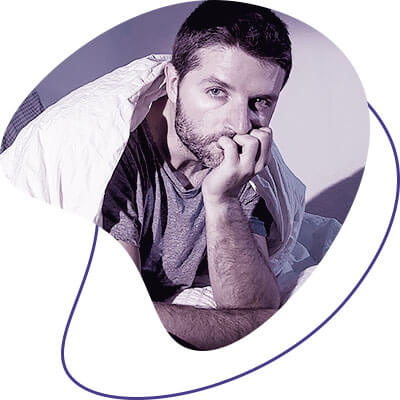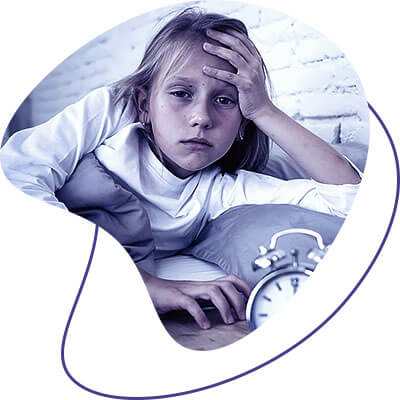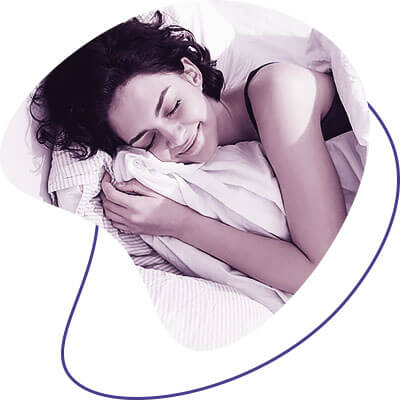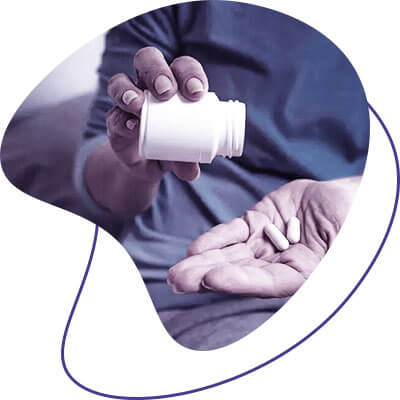A steadily increasing body of evidence indicating the importance of identifying and assessing sleep disorders in children results from a bimodal association between sleep and neuroontogenetic development, cognitive function and behaviour. Thus, poor quality/quantity of sleep, especially various sleep abnormalities, are associated with impaired neuroontogenetic development and neurocognitive deficits, as well as reduced ability to learn, social interaction, proper adaptation, behaviour and expression of emotions.
Many reasons can be found to emphasise the importance of sleep studies in children and the pharmacotherapy of sleep disorders in childhood. Firstly, the symptoms of sleep disorders in children are not only different from those in adults, but also heterogeneous among children of different ages. For example, obstructive sleep apnea in children, unlike adults, is not associated with either body mass index or male gender. Moreover, they also differ clinically: the main daytime symptom of obstructive sleep apnoea in adults is excessive daytime sleepiness, whereas in children, disturbances in attention or behaviour such as irritability, increased activity, inattention are more frequently described.
Interestingly, the clinical manifestations of the disorders also depend on the age of the child. For example, during the first years of life, the most frequent disturbances are insomnia (difficulty falling asleep or waking frequently during the night), various parasomnias and sleep breathing disorders. Later, among school children, especially adolescents aged 13-18, adverse sleep hygiene, sleep deprivation, sleep phase retention syndrome, and other circadian rhythm disturbances are the most common.
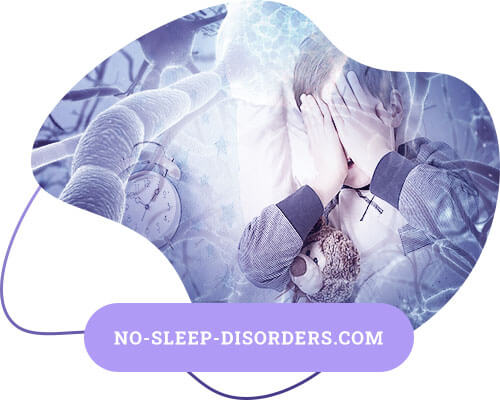
Another reason that makes the assessment of sleep disorders even more difficult is the general lack of training on this topic among doctors worldwide. Based on this, there is a hesitancy to use or inappropriate prescribing of medication (wrong choice, insufficient or excessive dosage). There is also a lack of clinical guidelines based on evidence-based medicine and officially approved data on sleep pharmacotherapy in paediatrics. For example, insomnia in children is often treated empirically with clonidine, a drug not used or approved for the treatment of insomnia in adults.
This article summarises data on the therapy of sleep disorders in children, given the lack of evidence-based clinical guidelines on the topic.
Insomnia in children
Insomnia is characterised by difficulty falling asleep or difficulty maintaining sleep (nocturnal awakenings), or waking earlier than desired. In children, insomnia is mainly manifested by behavioural disorders - childhood behavioural insomnia, which is represented by 2 main categories: insomnia falling asleep and insomnia associated with disorder; there is also a third type, which is a combination of these 2. Insomnia of falling asleep occurs when a child needs special conditions or objects (such as a dummy) in order to fall asleep, or to return to sleep upon awakening. In behavioural insomnia type 2 infants, there is late falling asleep (and there may be no awakening), which is due to an incorrect daily routine set by the parents. In these cases, the child refuses to go to bed or repeatedly demands attention (e.g. water or going to the bathroom).
Other types of insomnia may occur with increasing age. Adolescents may suffer from insomnia related to poor quality sleep hygiene, delayed sleep phase syndrome or psychophysiological conditions. Sleep-damaging habits are very common among adolescents: use of electronic devices in bed, weekend sleep disturbances, consumption of significant amounts of alcohol, caffeine (energy drinks), stimulants, or going to bed late at night and consequently waking up late in the morning. There is now a widespread concern about the sleep patterns of adolescents (going to bed, falling asleep, time spent without sleep and the subsequent development of daytime fatigue, sleepiness and inactivity).
The prevalence of insomnia varies during childhood. Insomnia is thought to occur in 30% of infants and preschoolers and decreases to almost 15% in later years. The causes of childhood insomnia are also age-related. In infants, with the exception of infantile type 1 behavioural insomnia, the most common medical causes are food allergies, gastroesophageal reflux, colic, chronic or acute infectious diseases. In preschoolers, nightmares, fears, separation from parents and anxiety are the most likely factors to increase insomnia. In addition, in adolescents, the main triggers of insomnia are sleep disorders, other sleep disorders associated with circadian rhythm disturbances, possibly combined with mental disorders (attention deficit/hyperactivity disorder, depression, anxiety).
Insomnia treatment
Drug treatment
As previously stated, clinical guidelines for pharmacotherapy of sleep in children are currently inadequate. There is also a shortage of relevant literature. Treatment of childhood insomnia with pharmacotherapy should be used when conservative methods, such as sleep hygiene or behavioural therapy, are insufficient. Comorbid pathology (medical, psychiatric and other sleep disorders, such as restless legs syndrome) should be carefully assessed before choosing drug therapy for insomnia.
Melatonin
Melatonin has been widely used to treat insomnia among autism spectrum disorders and hyperactivity syndrome, and benefits have also been found for developmental disorders such as Angelman syndrome or fragile X-chromosome syndrome. Melatonin, a sleep-promoting hormone, is synthesised in the pineal gland with peak secretion between 2am and 4am. It influences the timing of sleep onset and the frequency of awakening. An effective dose of 0.05 mg/kg, taken 1-2 hours before sleep; administration of melatonin 9-10 hours after waking up has also been suggested. Melatonin has a safe medical profile, with mild and rare side effects (more often sedation). Furthermore, melatonin does not interact with antiepileptic drugs, does not affect developmental processes and is not addictive.
Antihistaminergic drugs
Antihistaminergic drugs (diphenylhydramine, promethazine, hydroxyzine) are widely used to treat insomnia. Histamine is one of the activating neurotransmitters. Antihistaminergic drugs act through blockade of histaminergic H1 receptors, which leads to drowsiness (expressed as reduced falling asleep time and less frequent awakening), but can cause sedation. Sedation, which may persist until the next morning, and dizziness are the main side effects of these drugs. Anticholinergic side effects such as dry mouth, blurred vision, constipation, urinary retention, tachycardia may also be present. Drug resistance develops with regular use. The duration of the hypnotic effect lasts for almost 4-6 hours (peak circulation is reached 2 hours after ingestion). The recommended dose is 0.5-20 mg/kg and 1 mg/kg for dehydramine and hydroxyzine.
Adrenergic alpha receptor agonists
Adrenergic alpha receptor agonists (mainly clonidine and guanfacine) can induce sleep, but the mechanism is not yet clear. They act as central alpha-2-agonists in less than 1 hour after ingestion, with peak blood concentrations after 2-4 hours. In unconfirmed indications, the daily recommended dose for clonidine starts at 0.05 mg and reaches 0.1 mg; for guanfacine, 0.5-4 mg/day. Common side effects are hypotension, bradycardia and anticholinergic effects. Rapid withdrawal of clonidine may lead to tachycardia, hypertension and breathlessness. Other indications for these drugs are attention deficit hyperactivity disorder and related sleep disorders. Clonidine is also used in the treatment of PTSD and nightmares.
Benzodiazepine sleeping pills
Benzodiazepine hypnotics (estazolam, triazolam), acting through GABA receptors, are widely used to treat insomnia in adults, but are much less frequently prescribed in children (except clonazepam, which is used very frequently, especially for motor sleep disorder, which will be discussed later). There is a tendency to replace the typical benzodiazepine-type hypnotics with other drugs (non-benzodiazepine agonists) because of their better pharmacological profile (they do not induce muscle relaxation, hence reducing the risk of possible sleep apnoea). The effects of benzodiazepines on sleep patterns in the form of decreased sleep duration and slow-wave sleep duration (SWS) have been studied, however, these drugs can conversely increase sleep phase 2, amplitude and total number of sleep spindles (on EEG).
Non-benzodiazepine receptor agonists
Non-benzodiazepine receptor agonists (zolpidem, zaleplon) have no indication in children: their use in children under 12 years of age is contraindicated. However, due to their minor side-effects, they are used outside the registered indications as sleeping pills in doses of 5 mg or 0.25 mg/kg (zolpidem) in the evening. Zolpidem and zaleplon have half-lives of 1.5 to 2.4 hours and 1 hour, respectively, which explains their different clinical effects: zolpidem is indicated for the treatment of sleep disturbances and sometimes for insomnia, whereas zolpidem is used only for sleep disturbances.
Antidepressants
Antidepressants (trazodone, mirtazapine) and TCAs (imipramine, amitriptyline, doxepine) are widely used to treat insomnia in adults. Trazodone is a 5-NT2 receptor antagonist, blocks histamine receptors and is the most commonly prescribed drug for treating insomnia in children with mood and anxiety disorders. TCAs are commonly used to treat NREM - parasomnias, due to their inhibitory effect on SWS (slow-wave sleep). In case of insomnia, they are usually prescribed for prevention of sleep disorders, but have significant side effects (sedation, anticholinergic activity, etc.). In paediatrics, amitriptyline is used at a starting dose of 5 mg in the evening (maximum 50 mg), imipramine at doses of 0.5 mg/kg.
L-5-hydroxytryptophan
L-5-hydroxytryptophan is a serotonin and melatonin precursor. It is sometimes used for the treatment of insomnia (1-2 mg/kg before bedtime), due to its stabilising effect on sleep and its safety.
Chloral hydrate
Chloral hydrate is often used as a sleeping aid in both children and adults. It produces drowsiness and sedation an hour after taking it, with a half-life of 8-12 hours for children 1-3 years of age, and 3-4 hours for infants and children. Doses: 25-50 mg/kg. Chloral hydrate affects the respiratory and cardiovascular system - it suppresses respiration and cardiovascular activity if doses are exceeded.
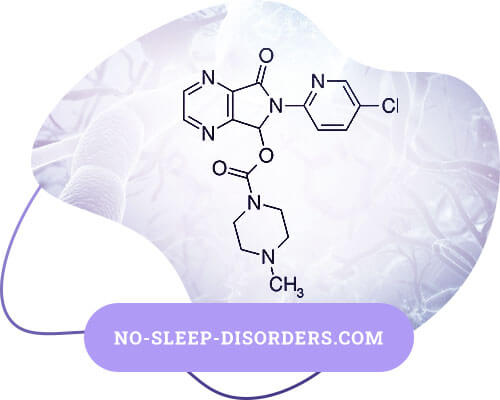
Non-drug treatment
Treatment of insomnia should begin with non-drug methods that include sleep hygiene education and behavioural strategies. In brief, the rules of sleep hygiene are: maintaining a constant sleep schedule (falling asleep and waking up at the same time), avoiding caffeine (and other stimulating substances such as tea and chocolate), performing regular physical activity (preferably in the morning), creating a sleep-friendly atmosphere (relaxation techniques in the evening hours, suitable bedroom environment).
For adults, behavioural interventions are: getting rid of negative thoughts/associations before bed, which can lead to insomnia. This approach has also been shown to be effective in children and can be started after the child is 6 months old. Relaxation techniques, sleep restriction and stimulus control can be used in children and are referred to in paediatrics as sleep planning and programmed awakening. Moreover, neglect or progressive neglect (which consists of complete or partial neglect of nocturnal agitation) are also behavioural techniques used in childhood.
Obstructive sleep apnoea in children
Obstructive sleep apnoea (OSAS) can occur in children of any age, with a prevalence of 2-5%. The choice of treatment is individual and depends on the following factors: age of the child, polysomnography findings, comorbidities and complications associated with OSAS. Surgical treatment including tonsillectomy and adenoidectomy is the first choice therapy in children with adenotonsillar hypertrophy and OSAS. However, the creation of positive air pressure in the upper tracts leaves treatment options for children who are contraindicated for surgery or where residual abnormalities persist. Pharmacological treatment of OSAS in children is extremely limited.
Pharmacological treatment
Intranasal corticosteroids have been recommended for the treatment of children with mild forms of OSAS for whom surgical treatment is not indicated, or for mild forms of OSAS that persist after surgery. Brouillete and colleagues studied the effect of intranasal corticosteroids on the incidence of combined and obstructive apnoea and hypopnoea in 25 children with OSAS. Nasal fluticasone propionate was used in 13 children, the other 12 received placebo for 6 weeks. The apnea-hypopnea index (AHI) decreased in the treated group and increased in the placebo group (from 10.7 +-2.6 to 5.8+-2.2/h in the fluticasone group and from 10.9 +- 2.3 to 13.1 +- 3.6/h in the placebo group; P = .04). Oxyhemoglobin desaturation and arousal levels increased significantly in the fluticasone group compared to the control group, while tonsil/adenoid size and number of symptoms did not change. In another randomised placebo-controlled trial, the efficacy of intranasal mometasone furoate and placebo was studied in 24 and 26 children with mild OSAS over 4 months. The AHI decreased in the treated group (from 2.7 +- 0.2/h to 1.7 +- 0.3/h) but increased in the placebo group (from 2.5+-0.2/h to 2.9+-0.6/h; P=.039). In the same study, the oxyhemoglobin desaturation index also decreased significantly in the treatment group compared to the control group (-0.6+-0.5/h versus 0.7+-0.4/h; P=.037). In summary, intranasal corticosteroids can reduce the severity of the syndrome in children with mild forms of OSAS. However, the minimum duration of recommended therapy for sustained improvement has not yet been studied.
Leukotriene receptor antagonists have also been studied in childhood OSAS. In a double-blind, placebo-controlled study, Kheirandlish-Gozal and colleagues found a reduction in AHI in children receiving montelukast therapy compared with children receiving placebo (from 9.2+-4.1/h to 4.2+-2.8/h and from 8.2+-5.0/h to 8.7+-4.9/s; P<.0001). Similar results were obtained in another double-blind, placebo-controlled study by Goldbart and colleagues. In another study of children with OSAS after tonsillectomy and/or adenoidectomy, AHI, low oxyhaemoglobin saturation and symptoms of OSAS improved significantly after 12 weeks of montelukast treatment. Thus, leukotriene receptor antagonists demonstrate a reasonable right to be prescribed for the treatment of OSAS in children. In addition, as an adjunctive therapy, montelukast may reduce sleep disturbances in children with OSAS after tonsillectomy. However, more research is needed.
The efficacy of combining leukotriene receptor antagonists with intranasal corticosteroids in children with OSAS has also recently been evaluated. 183 children with OSAS were divided into 3 groups: group A received montelukast orally, group B received mometozone furoate as an intranasal spray, and group C received a combination of montelukast + mometozone fuorate. After 12 weeks of OSAS treatment, the severity of symptoms such as snoring (P<.01), mouth breathing (P<.05), restless sleep (P<.05), hyperhidrosis (P<.05) and apnea (P<.01) decreased in all groups compared to the pre-treatment results. In addition, AHI decreased (P<0.05) and minimum oxyhemoglobin saturation increased (P<0.05) in all groups, while the adenoid/nasopharyngeal ratio assessed radiographically decreased (P<0.05). Compared to the other groups, children in group C showed more rapid improvement with respect to reductions in snoring, apnoea, and restless sleep (P<.05). Efficacy was higher in group C than in A and B (P<0.05). Kheirandish and colleagues studied children with residual OSAS after tonsillectomy and adenoidectomy who were treated with montelukast and budesonide for intranasal administration for 12 weeks. Compared with children receiving no therapy, the treatment group showed a significant improvement in AHI (0.3+-0.3/h, P<0.001), lower oxyhaemoglobin saturation (92.5+-3.0%, P<0.01) and arousal index (0.8+-0.7/h, P<0.001).
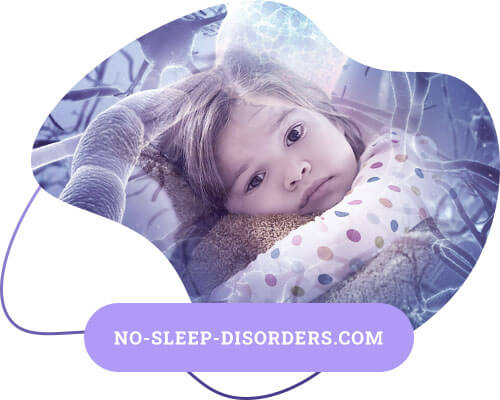
Several studies have evaluated the role of antibacterial treatment in children with OSAS. The effect of antibacterials has been associated with a reduction in the size of the tonsils and adenoids in some children, resulting in temporary relief of OSAS symptoms. In a prospective randomised trial comparing azithromycin and placebo, 22 children aged 2 to 12 years were divided into groups to receive azithromycin or placebo for 30 days. There was a trend towards a reduction in AHI in the azithromycin group and an increase in AHI in the placebo group (0.97+-2.09 versus 3.41+-3.01/h; P=.23). This study showed that although antibiotics reduce the severity of OSAS, they do not provide permanent improvement and cannot prevent surgical intervention.
In addition, a meta-analysis comparing the therapeutic effects of pharmacotherapy in children with OSAS found that the therapeutic effect of placebo was significantly worse than that of intranasal mometasone furoate, montelukast, budesonide and fluticasone in relation to syndrome severity and, in addition, fluticasone was better than placebo in relation to sleep efficiency. There are also other pharmacological treatment options for OSAS in children, but further research is still needed.
Non-pharmacological treatment
Complementary oxygen therapy during sleep can be used to treat children with recurrent oxygen desaturation during sleep associated with OSAS. Marcus and colleagues studied the effects of oxygen therapy in 23 children with OSAS aged 5 +- 3 years. In their randomised, double-blind study, oxygen was administered through nasal cannulas at a rate of 1 l/min for 4 hours. The mean and lowest oxygen saturation were higher when supplementary oxygen was inhaled. However, there was no difference in the numbers (AHI 10.9+-20.6/h with oxygen therapy versus 13.5+-19.3 with room air inhalation; P>0.05) and duration (14+- 7 s with oxygen therapy versus 13+-5 s with room air inhalation; P>0.05) of obstructive apnea. It was concluded that supplemental oxygen has no effect on the obstruction syndrome during sleep and can be offered as a temporary solution in children with hypoxaemia who cannot tolerate continuous positive airway pressure or in cases where surgical treatment is not indicated. The risk of hypercapnia emphasises the need for close monitoring at the start of treatment.
Surgical treatment
As mentioned earlier, adenotonsillectomy remains the therapy of choice, as adenotonsillar hypertrophy is the main cause of OSAS in children. However, the procedure is not without risks and complications. In addition, there is no set value for the severity of OSAS . Thus, adenotonsillectomy is usually performed in children with moderate to severe OSAS.
Parasomnias in children
Parasomnias are defined as unwanted physical symptoms or symptoms that develop while falling asleep, during sleep or while waking up. They are mostly temporary and unstable. Parasomnias are divided into 2 main categories: those that occur during the NREM sleep phase (confusional awakening, sleep tremors, sleepwalking, etc.) and the REM sleep phase (nightmares, sleep paralysis, etc.). Sometimes NREM and REM parasomnias coexist together - overlap parasomnia. In a large population study the prevalence of any parasomnia occurring at least once in children aged 2 to 6 years was 84%. NREM parasomnias occur in 1% to 4% of the adult population. They have characteristics of both states (both the dream state and the waking state), and usually occur in deep sleep (at stage 3 of NREM sleep). NREM parasomnias are more prominent in the first half of the night due to the predominance of slow-wave sleep at this time, whereas REM parasomnias occur more frequently in the second half of the night, when REM sleep predominates. Sleepwalking, for example, usually occurs at the beginning of the night, whereas nightmares occur at the end of the night. During sleep, children may exhibit varied and complex symptoms and appear confused and disoriented on awakening.
There are several triggers for parasomnias: sleep deprivation, sleep-disrupting stimuli (external (i.e. noises) or internal (e.g. OSAS), and stress (emotional and/or physical). Non-pharmacological approaches are usually sufficient for effective treatment. If this is not the case, drug therapy is prescribed to avoid dangerous consequences.
Pharmacological treatment
As mentioned earlier, in childhood parasomnias, medication is prescribed in cases of frequent and possibly dangerous episodes that do not respond to conservative treatments. There is no drug officially approved by the FDA for the treatment of parasomnias in children. Given that NREM parasomnias occur mainly during deep sleep, slow-release sleep suppressants such as benzodiazepine derivatives or tricyclic antidepressants may be recommended. The recommended tricyclic antidepressant is imipramine (low dose) and the recommended benzodiazepine derivative is clonazepam (0.125-0.5 before bedtime). Therapy is indicated for a short period (3-6 months) followed by a slow decline. Clonazepam reaches peak plasma concentrations 1-4 hours after oral administration and has a half-life of 30-40 hours (the half-life is longer in adults).
Non-pharmacological treatment
A first-line treatment is to provide a safe environment for the child and others (e.g. siblings). The environment should create a feeling of safety (alarms on doors, windows, removal of sharp or fragile objects from the nursery or common room). Triggers of parasomnia, which in turn may be other primary sleep disorders (e.g. OSAS) should be considered first. Other methods include scheduled awakenings. Treatment of nightmares should also include avoiding watching TV before bed, creating a dimly lit room, and using other cognitive-behavioural techniques.
Narcolepsy in children
Narcolepsy is a chronic neurological disorder characterised by a tetrad of clinical symptoms: hypnagogic/hypnopompic hallucinations, sleep paralysis and cataplexy. Cataplexy occurs in more than half of patients with narcolepsy and is distinctive between narcolepsy type 1 (narcolepsy with cataplexy) and narcolepsy type 2 (narcolepsy without cataplexy). Other symptoms of narcolepsy, especially in children, may include nighttime sleep disturbances, obesity, movement disorders (i.e. sloppy handwriting in children) and complex movement disorders (e.g. chorea).
Narcolepsy is a rare disorder. Its prevalence in the general population is between 0.025% and 0.05%, with the highest occurrence at ages 10 and 19. All the main symptoms of the narcoleptic tetrad, are the result of the incorporation of REM sleep fragments into wakefulness. Deficiency of hypocretin (orexin), which is a stimulatory/stabilising neuropeptide, plays a crucial role in the development of narcolepsy.
Narcolepsy may be secondary, e.g. following damage to the posterior hypothalamus caused by stroke, tumour, head trauma, neuroinflammatory processes, etc. The treatment of narcolepsy is symptomatic. It should be directed at the most prominent symptom and then to the less distressing manifestations for the patients. Behavioural and lifestyle modification techniques are used in conjunction with pharmacotherapy.
Pharmacological treatment
Excessive daytime sleepiness
There is no approved treatment for excessive daytime sleepiness in paediatric practice. Treatment for this condition consists mainly of central nervous system stimulants (amphetamine and methylphenidate salts) and wake-up medications, such as modafinil or armodafinil; a selective norepinephrine reuptake inhibitor (atomoxetine) may be an additional therapy. H3-histamine receptor antagonists (pitolizant) were later approved in the European Union as a treatment for orphan diseases. Amphetamines and methylphenidate have similar mechanisms of action as they are agonists of dopamine and noradrenaline. Amphetamines have a long half-life (11-30 hours), but twice daily administration (dextroamphetamine 5-30 mg, dextroamphetaminomethane 2.5-20 mg) is nevertheless preferable. Methylphenidate has a much shorter half-life (3 hours) and is also recommended twice daily (10-40 mg).
The most common side effects of stimulants are headache, anorexia, nervousness, insomnia, tics and weight loss, and heart failure is a worrisome sign. Prolonged use of amphetamines has a high risk of developing tolerance and dependence (FDA warning). Modafinil and Armodafinil have an unknown mechanism of action, which is the activation of the aminergic system (histamine and catecholamines) in the hypothalamus, leading to cortical excitation. Both drugs are not officially approved by the FDA or the European Medicines Agency for children under 17 years of age. Half-life is 4 hours and 15 hours for modafinil and armodafinil (which are stronger drugs), respectively. Recommended dosages are 50 to 400 mg/day divided by 2. Common side effects include nausea, vomiting, headache, and (less frequently) Stevens-Johnson syndrome. Atomoxetine may help to treat excessive daytime sleepiness, its possible side effects include headache, increased blood pressure, tachycardia, and weight loss. Pitolysant is an H3-histamine receptor antagonist. Histaminergic neurons are diffusely located in the cerebral cortex and facilitate excitation. H3-receptors play an inhibitory role in histamine-secreting neurons and promote sleep. Pytholysant blocks this cycle and therefore promotes wakefulness by effectively activating the histaminergic system, but it is still less potent than modafinil. Pitolizant has not been approved for children.
Cataplexy
There are no officially approved FDA drugs for the treatment of cataplexy in children. There is evidence that REM sleep, and therefore REM inclusions that are important in the development of cataplexy, are caused by cholinergic effects. Historically, tricyclic antidepressants with their potent anticholinergic effects have been used to treat cataplexy, although their effectiveness is extremely modest. Of the tricyclic antidepressants, imipramine and clomipramine are used but, as mentioned earlier, these drugs have serious side effects. Dosage ranges from 10 to 100 mg/day and 10 to 150 mg/day for imipramine and clomipramine, respectively. With the exception of tricyclic agents, other antidepressants (selective serotonin reuptake inhibitors such as fluoxetine 10-30 mg/day) and selective serotonin and noradrenaline reuptake inhibitors (venlafaxine 37.5-75 mg/day)] have been used to treat cataplexy. Sodium oxybate (gamma-hydroxybutyrate) has an FDA indication for the treatment of narcolepsy with cataplexy. Its mechanism of action (it is a GABA type B receptor agonist) is not clear, but it is thought to enhance sleep by reducing the likelihood of awakening and increasing SWS. Thus, daytime activity is improved.
Sodium oxybate is an oral solution (0.5 g/ml) with a short half-life. The first dose is taken before bedtime and the second dose about 2.5-3 hours later. The recommended dose is 2 to 8 g twice a day. Side effects are somnambulism and enuresis, sleep breathing disorders, constipation and tremor. Retrospective case-control studies have shown a significant improvement in EDS and cataplexy with sodium oxybutyrate.
Non-pharmacological treatment
Behavioural and lifestyle changes are important in the treatment of narcolepsy. Good sleep hygiene with regular and sufficient sleep and wakefulness is necessary. For excessive daytime sleepiness, scheduled short naps during the daytime are highly recommended. Educating patients and parents about the triggers and nature of cataplexy episodes is important.
Restless legs syndrome
Restless legs syndrome (RLS), also known as Willis-Ekbom disease, is a common neurological disorder. This syndrome is characterised by a desire to move the legs and is usually accompanied by uncomfortable or unpleasant subjective sensations. Symptoms appear or worsen during rest or inactivity, decrease with movement, and occur mostly in the evening or at night.
Intermittent limb movement (ILM) is characterised by clinical sleep disturbance and repetitive twitching during sleep, and cannot be explained by another disorder, medication or other substances. The diagnosis of ILM is made using specific polysomnographic criteria. In children, ILM seems to be closely related to RLS, although they are different diagnostic nosologies. Nevertheless, both diseases are associated with iron deficiency and have a genetic predisposition. Co-morbidities commonly associated with RLS and ILM are ADHD, anxiety and depression. The prevalence of RLS in children is between 2% and 4%. The higher prevalence in females, seen in adults, can be traced back to only 15-20 years of age. Regarding the pathophysiology of RLS/ILM, it appears to be multifactorial, involving genetic predisposition as well as iron and dopamine deficiency.
Pharmacological treatment
Nonpharmacological treatment is preferred for mild cases of RLS in children, whereas drug therapy is reserved for chronic, moderate and severe cases. The FDA has not approved any drug therapy for paediatric RLS or ILM. In children with iron deficiency, oral iron preparations may be used in the treatment of RLS/ILM if ferritin levels are less than 50 mg/l or between 50 and 75 mg/l. Information regarding other medications and experience with them in children is limited. A number of benzodiazepine preparations have been described in the literature on this topic and seem to be most appropriate. Clonazepam (0.25-0.5 mg) or temazepam (7.5-22.5 mg, depending on age) is recommended. In adults, dopaminergic agents or alpha-2-delta calcium channel ligands (gabapentin and pregabalin) are the drugs of choice for RLS. However, in children, these drugs should be used with caution. Known dopamine agonists used for the treatment of RLS/ILM are pramipexole (0.125-0.375 mg/day) and ropinirole (0.25-0.75 mg/day). Dosages increase in direct proportion to the age of the child, and these drugs should be given 1 to 2 hours before the onset of symptoms. Rotigotine has no recommendations for children under 18 years of age. Although gabapentin and pregabalin have no specific guidelines for the treatment of RLS in children, these drugs are effective in the treatment of epilepsy in children, confirming their safety.
Non-pharmacological treatment
Before starting drug therapy, iron and ferritin levels should be measured. In addition, triggers of RLS/ILM such as caffeine, nicotine, medications (SSRIs, antihistamines, dopamine blockers), insufficient and irregular sleep, or sleep apnoea should be considered. Physical exercise has also been shown to be effective.
Discussion
Sleep disturbances in children require special attention because they are associated with developmental process, cognitive deficits, learning or social skills decline. Symptoms differ from those of adults and vary according to the age of the child. Assessment of impairment is further complicated by inadequate training and lack of clinical guidelines for pharmacotherapy. In children, insomnia manifests itself mainly in behavioural disorders. Pharmacotherapy is worthwhile if conservative measures such as sleep hygiene and behavioural therapy are insufficient. A variety of pharmaceuticals have been suggested, including melatonin, antihistamines, α-agonists, benzodiazepines and non-benzodiazepine receptor agonists, antidepressants, L5-hydroxytryptophan. However, the lack of specific guidelines, as well as the limited data available in the literature, dictates caution in the choice of drug therapy. As mentioned earlier, OSAS can occur at any age in children and the choice of treatment depends on many factors, including the age of the child, polysomnography findings, the presence of comorbidities and complications associated with OSAS. Surgery is still the therapy of choice, whereas the use of continuous positive airway pressure is an alternative for children without indications for surgical treatment or when residual symptomatology is present. Pharmacotherapeutic options are limited.
The use of intranasal corticosteroids, leukotriene receptor antagonists and their combination reduces the severity in children with mild OSAS for whom adenotosilelectomy is contraindicated, or in mild forms of postoperative OSAS. There is no information on the minimum duration of therapy for sustained improvement. Antibiotics can reduce the size of the tonsils and adenoids, but do not provide lasting relief or prevent surgery. In addition, additional oxygen therapy at night has no effect on episodes of obstruction during sleep and can only be offered as a temporary solution.
Pharmacotherapy for parasomnias is only necessary when non-drug approaches such as psychotherapy and sleep hygiene education are insufficient to prevent them. Slow-release sleep suppressants - benzodiazepine derivatives or tricyclic antidepressants, prescribed for a short period followed by a slow reduction of the dose - have been suggested for the treatment of NREM parasomnia. In narcolepsy, treatment should treat the leading symptom. Central nervous system stimulants and activation drugs are used to treat daytime sleepiness, while norepinephrine reuptake inhibitors and histamine H3-receptor antagonists represent complementary therapies. Tricyclic antidepressants, SSRIs and SSRIs are also used to treat cataplexy. However, none of the above-mentioned drugs have been formally approved.
On the other hand, sodium oxybate has an indication for the treatment of narcolepsy with cataplexy and has demonstrated a significant reduction in both daytime sleepiness and cataplexy. The use of non-drug therapies, such as sleep hygiene education combined with short naps during the day, is highly recommended for excessive daytime sleepiness. Awareness of the triggers and nature of the episodes is also important for the treatment of cataplexy. For mild cases of RLS in children, non-pharmacological interventions such as exercise combined with sleep hygiene and control of triggers are preferred, while drug therapy is indicated for chronic, moderate and severe cases. For children with iron deficiency and RLS/ILM, oral iron supplementation is recommended. Several data show that benzodiazepine derivatives are an alternative therapy. Dopaminergic agents or drugs affecting alpha-2-delta calcium channel ligands should be used with caution in children.
Pharmacological treatment of most common sleep disorders in children is unproven and alternative methods, in which symptom relief has been observed, are preferred in most cases. The emergence of specific recommendations is of paramount importance, as sleep disturbances in children are quite common and can negatively affect children's development and the development of their cognitive and social skills.


